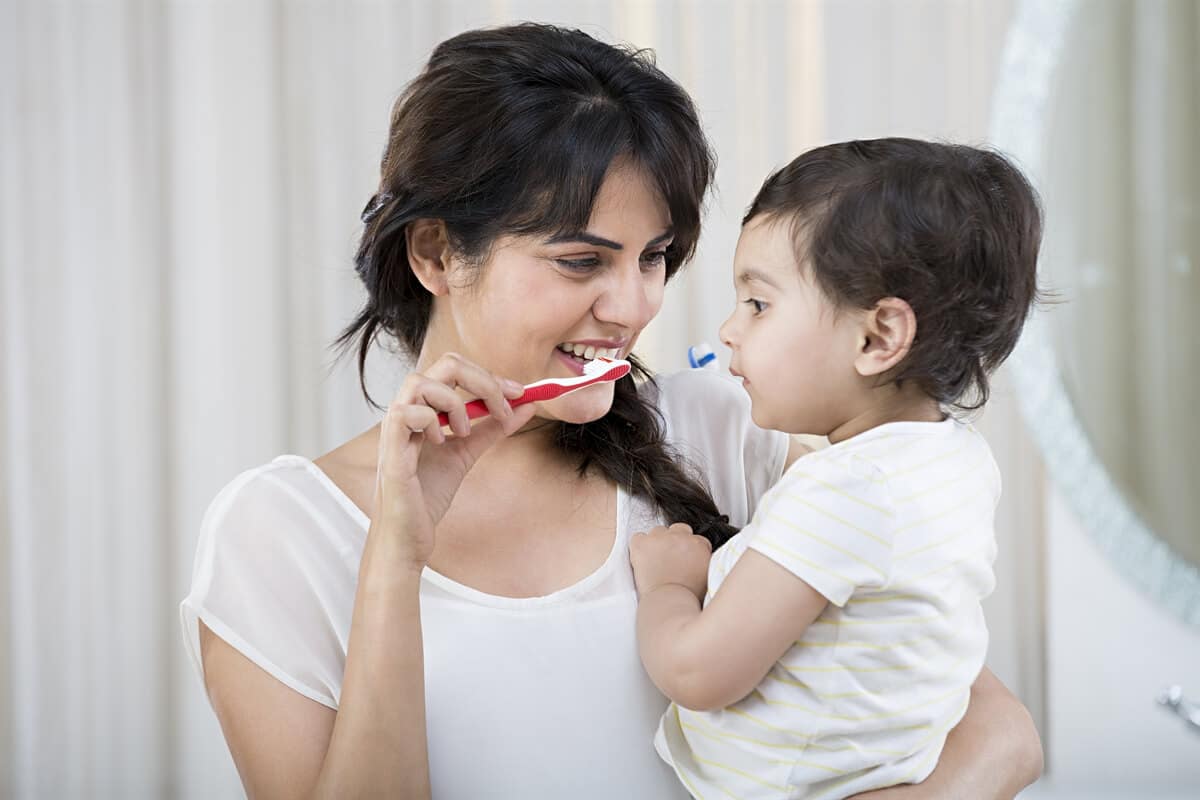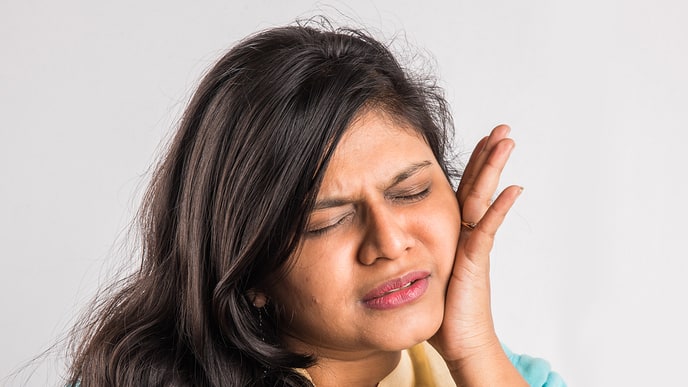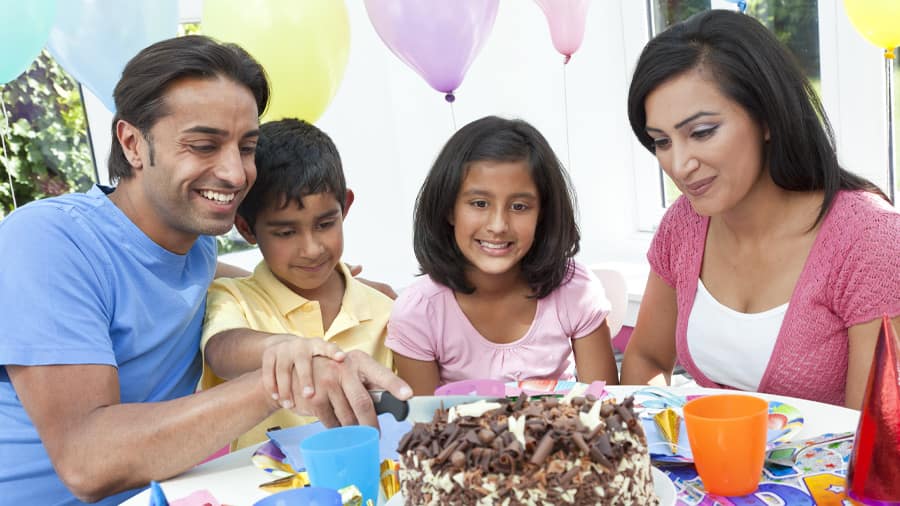What is Primary Dentition?
Primary dentition refers to the first set of teeth to erupt into the oral cavity. The milk/primary teeth start to form during pregnancy in the embryo phase. There are 20 deciduous or primary teeth that erupt during the infant years, with the tooth types including four incisor teeth, two canines, and four primary molars in each jaw. There are no premolars or third molars in the primary dentition.
During pregnancy, the foetus’ jawline develops along with enlargements that later become teeth. The teeth begin erupting at 6 months of age, and by the time the child is 3 years old, they will have a set of 20 primary teeth: 10 (lower teeth) in the lower jaw (mandible) and 10 (upper teeth) in the upper jaw (maxilla). The primary, or deciduous teeth later give way to the permanent teeth, which are the permanent successors to your child’s primary teeth.
Stages of Primary Tooth Development
While tooth eruption seems to be an easy process, there are certain stages involved in the development and formation of teeth. Understanding these stages is vital for comprehending dental anatomy and the process of tooth development. Both the primary teeth and the permanent teeth undergo the same development process. Here are the different stages of tooth development:
Bud Stage: This is the first stage of primary dentition eruption and happens in the eighth week in utero when cells known as dental epithelium bud from a thick band of cells called the dental lamina inside the upper and lower jaws. These cells eventually form the tooth germ, which consists of all the soft tissues needed to grow a tooth.
Cap Stage: During this stage, three different structures are developed: the enamel organ, the dental papilla, and the dental follicle. The cap with the cells that shape the outside layer of the tooth is called the enamel organ, the rest of the tooth bud is known as the dental papilla, and the sac of cells that surrounds both the enamel organ and the dental papilla is called the dental follicle.
Bell Stage: The enamel organ grows into a bell shape at this stage. The cells of the enamel organ work to develop the enamel layer of the tooth. Also, the enamel epithelium folds into the future shape of the tooth crown, and the dental lamina starts to break down.
Crown and Root Formation: It is during this crown stage that the outer two layers of your teeth, enamel, and dentin form. When it comes to root formation, the tooth roots are made of root dentin and root canals (where dental pulp lives).
Eruption Stage: Once the crown of the tooth has formed and the root has begun to develop, the tooth moves vertically toward the oral cavity so it can erupt into the correct position. Depending on the type and position of the tooth, each will erupt at different ages.
Primary Teeth Eruption Sequence
The first set of teeth that appear are the mandibular central incisors (6–10 months old). Next come the maxillary central incisors (8–12 months), the maxillary lateral incisors (9–13 months), and then the mandibular lateral incisors (10–16 months). Between 16 and 19 months, the mandibular and maxillary first molars emerge. The canines come shortly after, between 19 and 23 months. Finally, in the primary dentition eruption, the second molars come in around 27 months.
The order of deciduous tooth loss generally follows the same eruption sequence: first the incisors, followed by the first molars, then the canines, and finally the second molars, with the mandibular pairs preceding the maxillary teeth. Primary teeth, through exfoliation, will be replaced by permanent teeth, causing root resorption, where the permanent teeth push the roots of the primary teeth. These roots later dissolve and become absorbed by the formation of permanent teeth.
Importance of Primary Teeth
Some parents think that primary teeth are less important than permanent ones as they fall out quickly. On the contrary, primary teeth are vital to a child’s growth and development, as they pave the way for permanent teeth later. Additionally, the importance of the primary teeth lies in the major functions that they perform. These include:
Maintaining good health: Tooth development and the health of the primary teeth can largely affect the overall health of the child. Tooth decay is a common issue that affects a child’s primary teeth, and this can lead to tooth abscesses. The infection from the abscessed teeth can later spread to other areas and lead to pain and even fever.
Eating and nutrition: Strong teeth help children eat healthy foods. If the primary teeth of the child are decaying and have caries, they are less likely to eat fresh fruits and vegetables, which in turn contributes to dietary deficiencies and malnourishment and sometimes makes the child underweight. Primary teeth play an important role in proper chewing motions and thus facilitate nutritious eating.
Speech development: Primary teeth play an important role when it comes to the speech development of a child. The proper positioning of the primary teeth can affect pronunciation and speech formation. When young children have missing teeth, they will have difficulty pronouncing certain sounds.
Space for permanent teeth: Primary teeth usually hold the space for the permanent teeth that develop beneath the jaw and later erupt after the primary teeth fall out. If the child loses the primary teeth very early, the nearby teeth could move into the space, blocking permanent dentition and resulting in crowding.
Common Issues With Primary Teeth
Children may face diverse issues with their primary teeth, just like adults face various dental problems. Here are some of the common issues with primary teeth:
Tooth decay: Primary teeth can be affected by tooth decay, especially if the child consumes a high-sugar diet and does not practise proper oral hygiene with brushing and flossing.
Trauma: Children, while falling, colliding, or participating in any leisure activity. The anterior teeth, especially the maxillary central and lateral incisors, are most commonly affected by trauma.
Sensitivity: Factors such as tooth decay, cavities, and enamel erosion can cause sensitivity in children and result in pain and discomfort.
Gingivitis or gum disease: In children with poor oral hygiene practices, gum disease is common and involves pain in the mouth, gum recession, and areas of swelling. In most cases, gingivitis and gum disease could be avoided if more care is taken to brush and floss daily.
Grinding: This is an involuntary habit commonly seen in children. Constant grinding can increase the risk of tooth enamel eroding, resulting in tooth decay and sensitivity.
Care and Management
Taking care of the primary teeth is important by providing proper dental care and management. The first teeth always ask for more care and attention, as they could develop issues if left unnoticed. Oral care for your little one’s teeth can start even before your baby’s teeth come in. You may keep the gums clean by gently rubbing a clean, damp washcloth over the gums after each feeding.
Here is what to do next:
For children under 3 years old: It is recommended to make the child brush twice a day with a soft toothbrush and a smear of fluoride toothpaste.
For instance, if you are looking for a soft-bristled toothbrush designed specifically for kids who are learning to brush, try using the Colgate Toothbrush for Kids (0–2 years). Its extra-soft bristles help in effectively cleaning the children’s developing teeth and gums, with the added benefit of getting easy access into the child’s mouth.
For children 3 years of age or older: It is ideal to train the child to brush their teeth twice a day with fluoride toothpaste. Also, teach them to spit the toothpaste out once they are brushing and instil the habit of flossing when their teeth start to touch each other.
For instance, if you are looking for a toothpaste that is ideal for your child, try using Colgate Toothpaste for Kids (3-5 years). It is 50% less abrasive than adult toothpaste and is gentle on the delicate tooth enamel of kids. Using this toothpaste can also help protect your kids’ mouths from cavities, plaque, enamel problems, and bad breath.
Providing proper care for your child’s primary dentition is essential for good oral health as well as for healthy permanent teeth. Understanding the various tooth development stages, the importance of primary teeth, and addressing common issues early can help prevent serious dental problems. Regular dental check-ups and practising good oral hygiene can help ensure your child’s dental health. Additionally, if your child has tooth alignment and spacing issues, orthodontic treatments are available in dentistry to resolve the issue.
Frequently Asked Questions
1. At what age is the primary dentition completed?
Children usually get their first teeth at 6 months old, and their primary dentition is complete with 20 deciduous teeth by age 3.
2. What are the signs of teething?
Common signs of teething include irritability, drooling, biting and gnawing, low-grade fever, diarrhoea, and even cheek rubbing and ear pulling.
3. When should my child have their first dental visit?
You may schedule the first dental visit for your child by 12 months of age or when the first tooth comes in. Visiting a dental professional can make your child feel comfortable with dental appointments.
4. What are the primary and secondary teeth?
Primary teeth are also known as baby teeth or deciduous teeth and are the first set of teeth to erupt in a child’s mouth. Secondary teeth are the permanent or adult teeth that begin to emerge while the primary teeth fall out and last for a lifetime.
This article is intended to promote understanding of and knowledge about general oral health topics. It is not intended to be a substitute for professional advice, diagnosis or treatment. Always seek the advice of your dentist or other qualified healthcare provider with any questions you may have regarding a medical condition or treatment.
ORAL HEALTH QUIZ
What's behind your smile?
Take our Oral Health assessment to get the most from your oral care routine
ORAL HEALTH QUIZ
What's behind your smile?
Take our Oral Health assessment to get the most from your oral care routine













